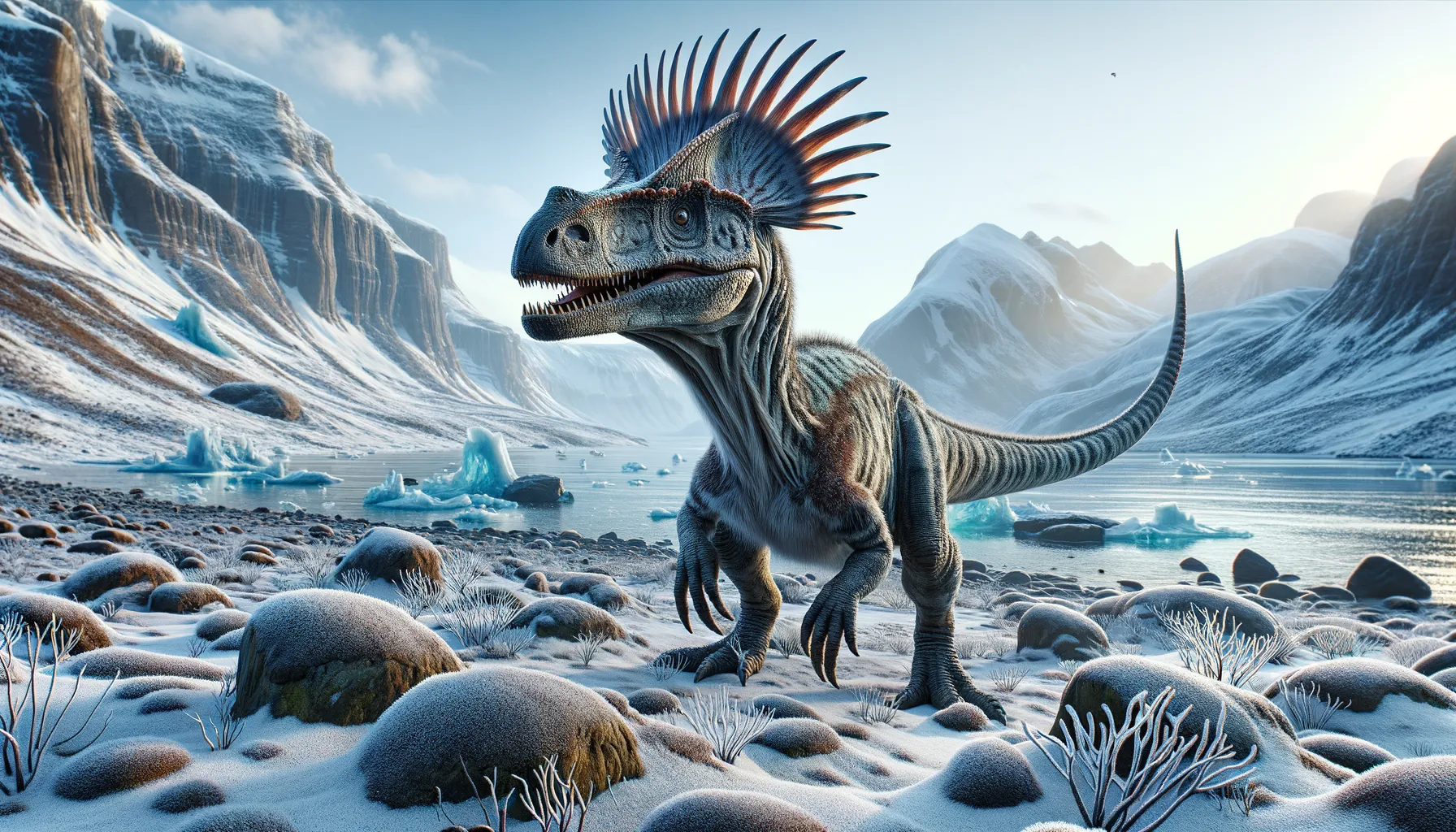
Cryolophosaurus
The frozen lizard with a unique crest.
Period
Jurassic
Length
About 6 to 7 meters (20 to 23 feet) long.
Height
Approximately 2.5 meters (8 feet) tall.
Weight
Roughly 450 kilograms (1,000 pounds).
Cryolophosaurus, also known as the 'frozen crested lizard,' was a theropod dinosaur that lived during the early Jurassic period in what is now Antarctica. It was notable for its distinctive crested head and its adaptations to a polar environment. Despite its colder habitat, it shared many similarities with other large meat-eating dinosaurs. The discovery of Cryolophosaurus expanded our understanding of dinosaur distribution and adaptability during ancient times.
Diet
Cryolophosaurus was a carnivore, primarily feeding on other dinosaurs and prehistoric animals. Its sharp teeth and powerful jaws made it well-suited to hunting in its frigid environment.
Hunting
This dinosaur likely hunted by ambushing or stalking prey, using its agility to catch smaller dinosaurs. Its environment may have presented challenges, meaning it needed to be resourceful and opportunistic in finding food.
Environmental challenges
Living in a polar environment, Cryolophosaurus faced extreme seasonal changes and periods of darkness. It would have needed to adapt to cold temperatures and potentially limited resources during certain times of the year. These factors may have influenced its hunting strategies and diet.
Speed
Moderately fast for a large theropod.
Lifespan
Estimated 20 to 25 years.
First discovery
Discovered in Antarctica in 1991.
Fun Facts
- Cryolophosaurus is sometimes nicknamed 'Elvisaurus' because its crest resembles Elvis Presley's hairstyle.
- This dinosaur lived during the Early Jurassic period, around 190 million years ago.
- Cryolophosaurus was discovered in Antarctica on Mount Kirkpatrick, making it one of the first dinosaurs found on the continent.
- It was a large theropod dinosaur, estimated to be about 6-7 meters long.
- The name Cryolophosaurus means 'cold crest lizard,' reflecting its icy discovery location.
- Unlike many other theropods, Cryolophosaurus had a distinctive crest that ran across its head.
- Its discovery in such a cold environment suggests that the climate in Antarctica was much warmer during the Early Jurassic.
Growth and Development
Young Cryolophosaurus would have grown relatively quickly to avoid predation during early life stages. The cold environment might have influenced its growth patterns, potentially favoring larger body sizes for better heat retention.
Habitat
Cryolophosaurus inhabited the forests and coastal regions of ancient Antarctica, which was warmer than today but still challenging. Its habitat likely included mixed coniferous forests and open areas. Seasonal changes in daylight and temperature would have been significant environmental factors.
Interaction with other species
Cryolophosaurus likely interacted with various dinosaur species and other prehistoric animals in its ecosystem. It may have competed with other predators for food and resources. Social behaviors among individuals are speculation, but competition would have been a factor in its survival.
Natural lifespan
It likely lived up to 20–25 years in the wild.
Reproduction
Like other theropods, Cryolophosaurus would have laid eggs in nests made out of vegetation and soil. Parental care is not well-documented, but it may have watched over its eggs and young to protect them from predators.
Social behaviour
Its social behavior is not well understood, but Cryolophosaurus could have been solitary or may have lived in groups, at least during certain times such as breeding or hunting seasons.
Fossil locations
Fossils of Cryolophosaurus have been found in the Transantarctic Mountains, revealing important insights into early Jurassic life. These discoveries highlight dinosaur existence in polar regions, challenging previous assumptions about dinosaur habitats.
